Over the years, the veteran Yekke colony has become a magnet for hundreds of artists working in it, and culinary initiatives and entertainment of urbanites who want to fulfill the Israeli dream of a country home. Pardes Hanna celebrates 90 this year, but it is still not on your tourist map. Maybe next weekend it will happen
It's not exactly in the north of the country, nor in the center. Maybe that's what makes Pardes Hanna in the northern Sharon region a place where each person can be whatever he or she wants. On the one hand, the town has filled up in recent years with city people from Tel Aviv, Ramat Hasharon and other cities in central Israel who came here for the dream of a country home, a garden and a family dog—despite the early morning traffic jams on Israel's coastal road. On the other hand, Pardes Hanna has become a place for beatniks and artists who have discovered a place to create, to launch initiatives, and enjoy a rich community life.
Amid this modern-day influx, let's not forget the veterans of 'Moshava HaYekkim' (1929), who grew up under the patronage of Baron de Hirsch ("The Known Benefactor"), and of Karkur (1913), who preserved the character of Arab landholders from the Ottoman period. Here we see a dynamic mix of old and new, longstanding and new young residents, artists and common people. Something in this human patchwork seems to be going quite well. This town with its seemingly endless tiny roads and its 43,000 residents somehow still refuses to become a city. Maybe it's due to the prestige of remaining a 'local council', or maybe due to the bureaucracy involved.
e way or another, Pardes Hanna (named for Hannah Rothschild, the niece of Baron de Hirsch) is marking 90 years since its founding and 50 years since its union with Karkur in 1959. "So why does everyone call it "Pardes Hanna" rather than "Pardes Hanna-Karkur"? Irit Oren, director of the Veteran's House, explains: Both communities have strong sentiments for their past and neither wants to surrender its classic name. Pardes Hanna was once considered the "spoiled younger sister" due to the philanthropy of the Baron while Karkur's roots go back to an English association founded on capital and entrepreneurship that, surprisingly, succeeded during hard times in Israel. Neither really wanted the other, but just like today's political rivals in Israel they understood that two is stronger than one.

Photo by Ziv Reinstein
The best possible attraction – the inhabitants
Pardes Hanna doesn't have mountains surrounding it, nor does it have all that much green space (aside from a lone oak tree and some agriculture). It seems as if almost no green areas remain in this large local council that covers an area of about 9 sq. miles (about half the area of Tel Aviv). Roaming the streets of Pardes Hanna will not expose you to a lot of attractions, but in truth, it's the town's inhabitants that are the biggest attraction. Hundreds of artists (an enormous amount for one locality) work and live here, which resulted in the launching of the annual Moshava Artists event—a weekend featuring some 40 workshops for the entire family at six different sites in which visitors can encounter the artists from up close and view them as they work. During the event a number of Pardes Hanna residents will open up their homes to visitors, who can also enjoy tours around artists' workshops as well as food stands that serve up authentic ethnic food.

Photo by Ziv Reinstein
Artist Liat Binyamini-Ariel works with papier-mâché "but mainly she's a psychologist," say five pensioners who are sitting in her home (which doubles as Liat's studio) and working with colored paper that has een dried. Liat is a veteran illustrator of books and describes herself as 'the scion of a dynasty of artists from different fields including painting, music and mathematics. After having illustrated some 250 books, Liat decided to grow in a different direction and studied the art of paper sculpture on her own. "It gave me the chance to play with colors and freestyle art rather than being tied down to the restrictions of a particular book," she says. It's been 18 years already that she's held workshops in her home using recycled paper and water-based materials. The result: an assortment of beautiful sculptures, kitchen utensils, dolls, and even a sofa—all made of papier-mâché!
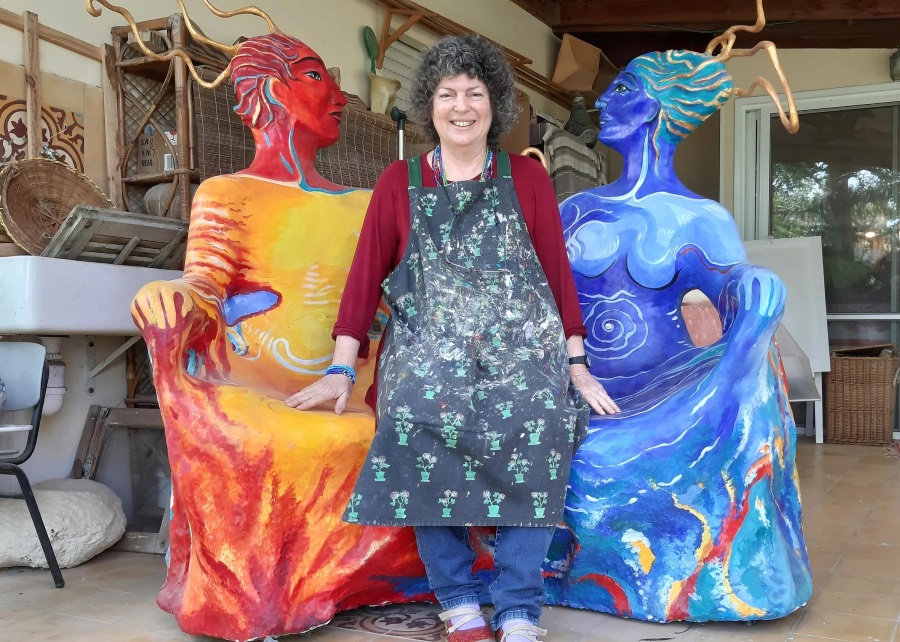
Photo by Ziv Reinstein
The next 'jewel' I visited was Yifat Barkat, a graduate of the Bezalel Academy of Art and Design and a jewelry maker for 20 years. One day someone saw a woman wearing a piece of jewelry Yifat made, a necklace, and contacted her. That's when she realized she had a knack for handiwork, and more. Nowadays requests come from all over the world from people interested in purchasing her handmade earrings, pendants, chains, and rings.
She employs classic jewelry-making techniques of inlaying precious stones and soldering. "Each piece of jewelry is an inspired creation, even the ones that are mass produced. All have been given the best possible artistic rendition," she says. It's a difficult getting to her Pardes Hanna studio but when you do get there, get your wallets ready.
The first thing one notices about Liat Sharon, an art therapist who works mainly with ceramics, is her perpetual smile. She is originally from the community of Mechora in the Jordan Valley, but has lived in Pardes Hanna for the past 30 years. She uses small stones in working with clients, which she uses skillfully in order "to create analogies with daily emotional challenges". She claims she doesn't "heal" anyone; any sort of healing, she says, is found inside all of us. Healing exactly what? It runs the range from emotional problems to the challenges of daily life. Liat's therapeutic approach is based on Jungian psychology, and she teaches her clients to embrace any existing imbalances by working with stones, clay, plasticize, paints, and more.
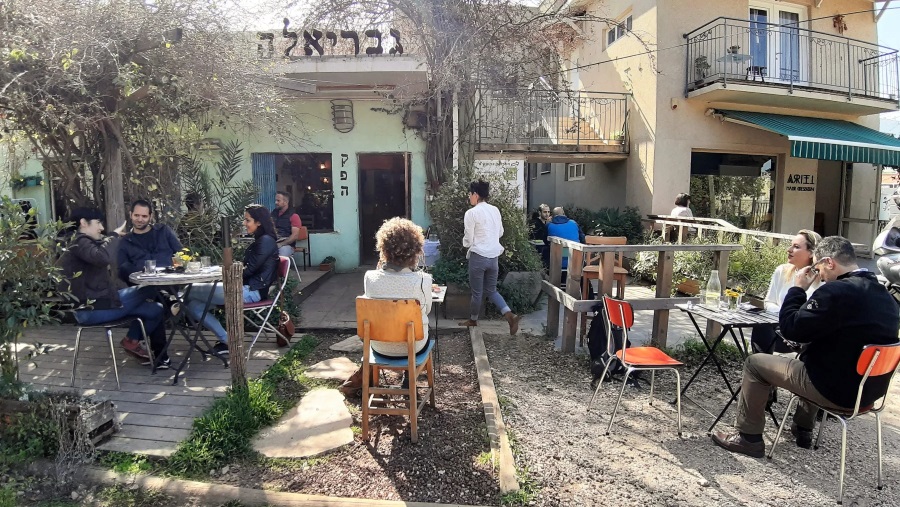
Photo by Ziv Reinstein
One finds in Pardes Hanna neighborhood cafés such as Gabriela & Ruth's, which opened up eight years ago and operates in an old building once used an accounting office for farmers. The café originally began as a simple coffee kiosk, but over time, the two started preparing food "because people came in hungry". The café, situated right along the road, is an eclectic setting of furniture, unique sitting nooks, and a menu that offers a healthy and tasty fare including smoothies, vegetable curry with coconut milk, and breakfasts.
In the courtyard of the market, one finds old sites that have been converted to bars, luncheonettes, and stores selling fascinating knick knacks. In the evenings it turns into a food court that includes open-stage performances, mainly on Friday afternoons. During the week local DJs play music for the public. While there, visitors can have a beer at Jem's, or pasta at Pasta Market, or a hamburger at Capara restaurant, which opened up about a month ago.
Capara is the fulfillment of a dream for the owners, a couple from Zichron Yakov named Zamran Ben Ami and her spouse Benny Biton, who made a midlife transition. They have six children and Capara is their 'seventh child' according to Zamran. The couple first arrived to the market area for a day of recreation, and fell in love with the place. Benny, who comes from the world of culinary arts, stands behind the counter frying the restaurant's quality hamburgers. Zamran assures us that there are also two other vegetarian dishes on the way—lentil burgers and stir fried mushrooms—that I get to taste. Everything was scrumptious.
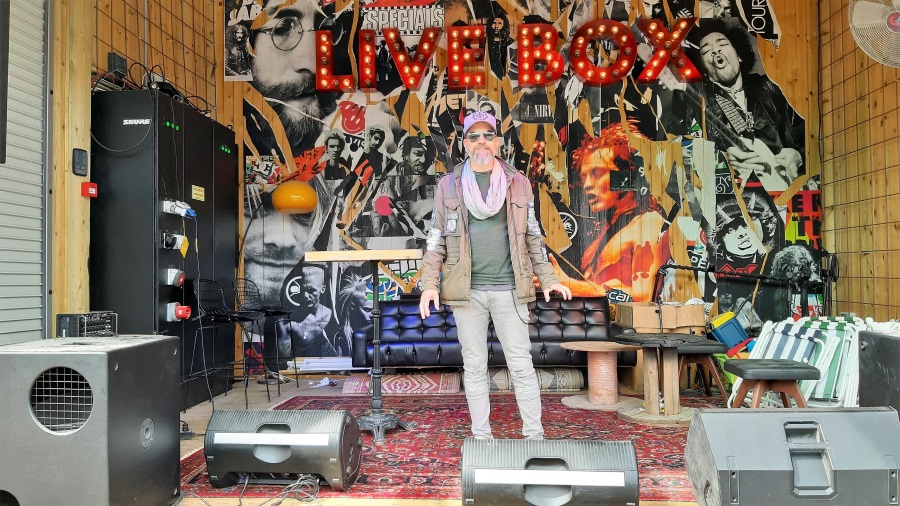
Photo by Ziv Reinstein
If you're looking for a less sophisticated menu, one finds at the northern entrance to Pardes Hanna's Big Mall a restaurant called Hakna'ani. Owners Uzi and Vicky Aharon opened it more than a year ago and serve up hummus and falafel. At first it operated as a kiosk but didn't bring in enough to make a living. On the brink of closing, they consulted with a friend who recommended opening a hummus restaurant. Vicky started it all by preparing a menu of green tehina, hot pepper falafel, lemon sauce, spicy tomatoes, assorted dips, handmade pita bread (i
ncluding from whole wheat), and gluten-free falafel. Before you knew it, a terrific hummus restaurant was born. "People's reactions were excellent, which assured us that we were moving in the right direction," says Uzi.
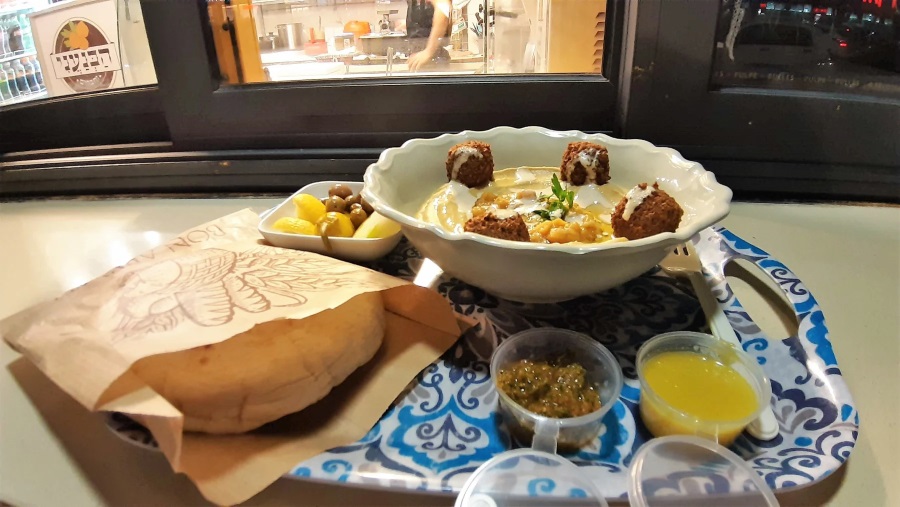
Photo by Ziv Reinstein
It starts to get cold in the evening in Pardes Hanna. Washington Avenue, which connects the town to Binyamina-Givat Ada, begins to fill with a long line of cars on their way home. It seems that for many people, the quality of life here is worth enduring the traffic jams involved in living here and commuting to work.
The recently elected head of the Local Council, Hagar Peri-Yagur, is a town planner by profession and a native Pardes Hanna resident. She has taken the helm of a rather sleepy local council, certainly in terms of tourism. The Council's annual budget totals 268 million shekels, which comes from municipal and other taxes plus another 120 million that comes in from the local industrial zone. But as far as tourism goes, it seems like nothing is going to be invested in tourism. Peri-Yagur is busy stabilizing this locality which is alive, but not kicking.
Neglecting tourism is a missed opportunity in a town that truly has plenty of little-known attractions to offer. There's a piece of ancient history at Haris House, the first house in the Council, or HaAchuza where Karkur's founders slept. In this locality one finds artists and therapists, culinary arts and an evolving night life and community spirit. The potential exists but it hasn't been tapped. Even direction signs that could lead tourists to attractions are absent; neither is there a special route that leads visitors through the wonderful history of Maged Street, once populated by numerous doctors as well as Israel's second prime minister, Moshe Sharett.
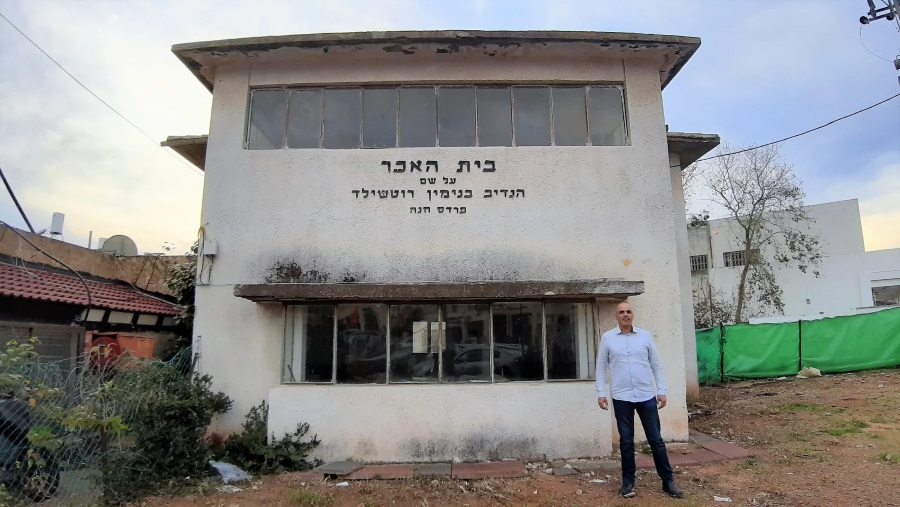
Photo by Ziv Reinstein
Local residents have provided a serious boost to tourism in Pardes Hanna, so how is it that the town remains a hidden gem and does not appear on the map of Israeli tourists? The potential is here, the sites too. The town's people are both charming and fascinating. Now, as we approach 90 years since the founding of Pardes Hanna, originally a colony, one feels a fresh wind of change and renewal on the horizon.
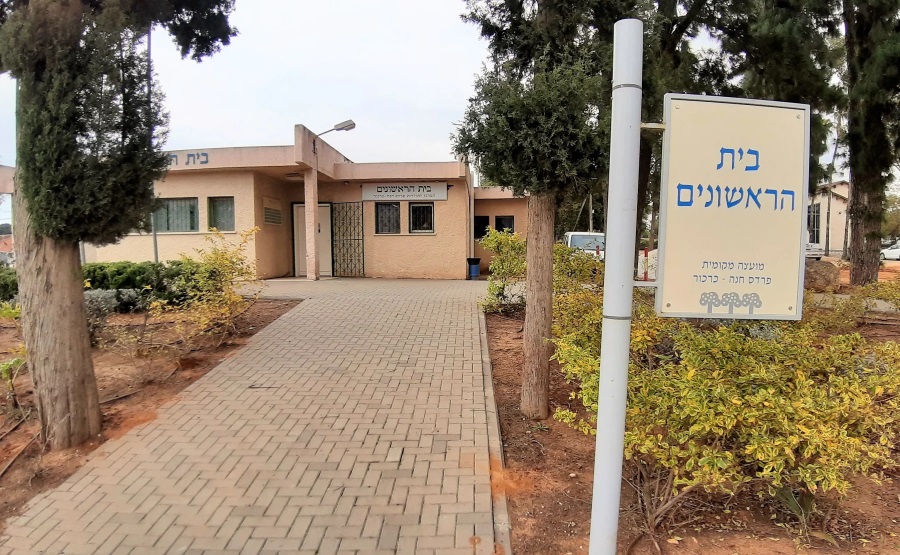
Photo by Ziv Reinstein
Eyal Kagan, Deputy Mayor of Pardes Hanna Karkur council claims that the person who lead the system has to dream big and paint his dream and after he has a dream he has to take it down to the ground and start implementing it. Kagan, a 53-year-old Lawyer, resident of Pardes Hanna, is a social entrepreneur whose community activity focuses mainly on local business connections, community development, tourism promotion and regional cooperation.


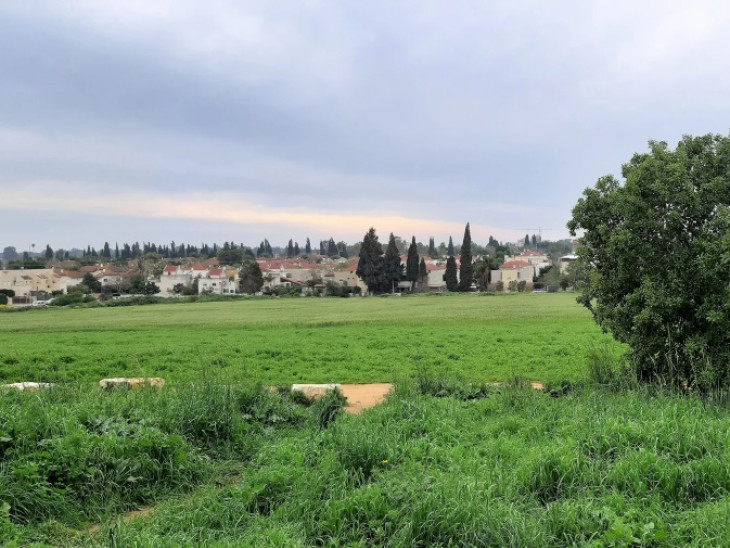


 0
0